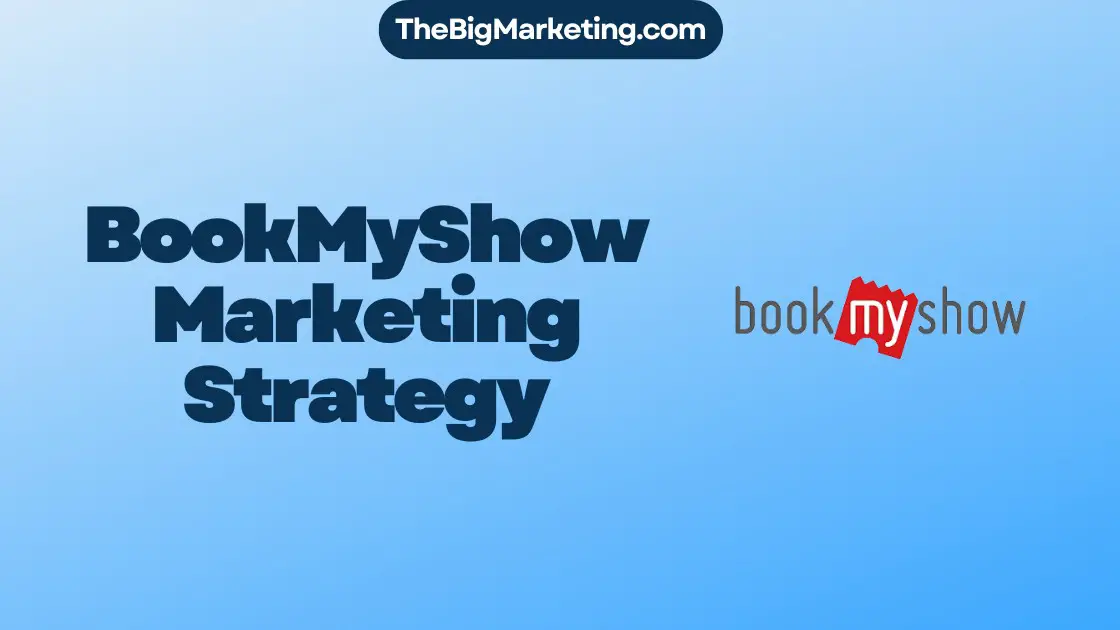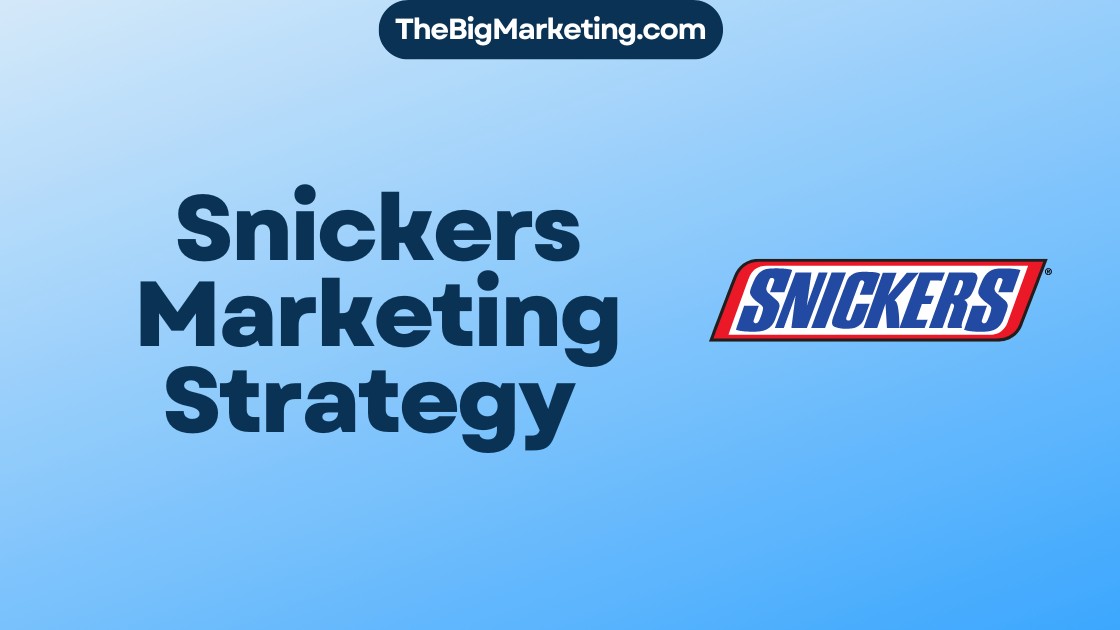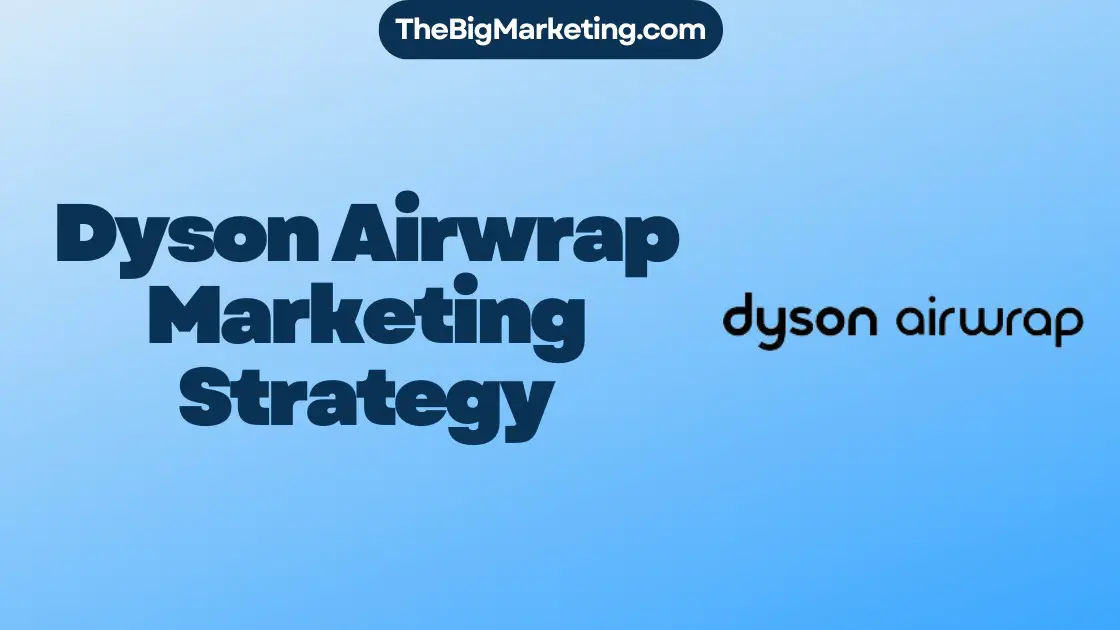Demand generation in marketing refers to the umbrella of marketing programs that aim to create interest and excitement about a company’s products or services. It is not the same as lead generation, as it focuses on educating and engaging potential customers rather than capturing their contact information. Demand generation is a long-term strategy that prioritizes reaching and engaging buyers who are not currently in a buying cycle. Its goal is to make the company’s product or service top of mind for future purchases.
Key Takeaways:
- Demand generation in marketing seeks to create interest and excitement about a company’s products or services.
- Unlike lead generation, demand generation focuses on educating and engaging potential customers.
- It is a long-term strategy that aims to reach and engage buyers who are not currently in a buying cycle.
- The goal of demand generation is to make the company’s product or service top of mind for future purchases.
- By implementing a well-rounded demand generation strategy, companies can generate interest, build brand awareness, and drive customer demand.
The Components of a Successful Demand Generation Strategy
A successful demand generation strategy encompasses various components that work synergistically to create awareness, nurture leads, and drive customer conversions. By implementing these components effectively, businesses can maximize their marketing efforts and generate consistent demand for their products or services.
1. Creating Awareness
Creating awareness is the first step in the demand generation process. By leveraging multiple marketing channels, such as social media, content marketing, and advertising, businesses can reach a wider audience and generate interest in their offerings. A well-crafted social media presence, engaging content, and targeted advertising campaigns can effectively capture the attention of potential customers and initiate their journey through the sales funnel.
2. Nurturing Leads
Nurturing leads is an integral part of demand generation. It involves providing valuable content and personalized experiences to engage prospects and build relationships with them. By offering educational resources, useful insights, and tailored solutions, businesses can establish themselves as trusted authorities in their industry and guide leads towards making a purchasing decision.
3. Lead Scoring and Qualification
Lead scoring and qualification play a vital role in prioritizing prospects who are most likely to convert into customers. By implementing a lead scoring system, businesses can assign points to leads based on their engagement level, demographic information, and actions taken. This allows them to focus their efforts on high-quality leads and allocate resources more effectively.
4. Aligning Sales and Marketing
Aligning sales and marketing teams is crucial for a seamless customer journey. Both teams must work together to ensure consistent messaging, share insights, and collaborate on lead nurturing activities. This alignment facilitates a smoother transition from marketing-generated leads to the sales pipeline, resulting in increased conversion rates and a higher return on investment.
The image above exemplifies the different components of a successful demand generation strategy. It visually represents the interconnectedness and flow between awareness, lead nurturing, lead scoring, and sales and marketing alignment.
In conclusion, demand generation relies on a well-rounded strategy that encompasses creating awareness, nurturing leads, implementing lead scoring and qualification systems, and aligning sales and marketing efforts. By focusing on these components, businesses can develop an effective demand generation strategy that drives customer demand and fuels business growth.
The Importance of Demand Generation
Demand generation is crucial for businesses as it plays a vital role in multiple areas, driving growth and ensuring long-term success. Let’s explore why demand generation is of utmost importance:
1. Increased Brand Awareness
Effective demand generation strategies help businesses reach new markets and attract potential customers. By creating awareness and generating interest, companies can significantly increase their brand visibility and establish themselves as leaders in their industry.
2. Enhanced Customer Engagement and Trust
Through demand generation efforts, businesses can actively engage with their target audience, building relationships and fostering trust. By delivering valuable content and personalized experiences, companies can establish their expertise and credibility, leading to stronger customer relationships.
3. Expanded Market Reach and Growth Opportunities
Demand generation enables businesses to tap into new markets and explore fresh growth opportunities. By reaching broader audiences and actively generating interest, companies can expand their customer base, increase market share, and seize new avenues for business growth.
4. Improved Conversion Rates
Nurturing and educating prospects is a core aspect of demand generation. By providing valuable information, businesses can guide potential customers through the buyer’s journey, increasing the likelihood of conversion. Engaging and educating prospects helps build trust and positions the company as the preferred choice when the buyer is ready to make a purchase decision.
5. Valuable Data and Insights
Demand generation initiatives provide businesses with valuable data and insights into their target audience. By analyzing the effectiveness of different marketing efforts, companies can gain valuable insights about customer behavior, preferences, and trends. This data can then be utilized to inform future marketing strategies and optimize efforts for even better results.
Overall, demand generation is an essential marketing strategy that brings multiple benefits to businesses. It raises brand awareness, drives customer engagement, expands market reach, improves conversion rates, and provides valuable data and insights. By focusing on demand generation, companies can position themselves for sustained growth, establish strong customer relationships, and stay ahead of the competition.
| Benefits of Demand Generation |
|---|
| Increased brand awareness |
| Enhanced customer engagement and trust |
| Expanded market reach and growth opportunities |
| Improved conversion rates |
| Valuable data and insights |
Demand Generation Tactics and Best Practices
Implementing effective demand generation requires a combination of smart tactics and best practices. By utilizing the right strategies and leveraging the power of modern tools, businesses can maximize their potential for success. Below are some key demand generation tactics, best practices, and tools that can help drive results:
Content Marketing
Content marketing plays a crucial role in demand generation. By creating high-quality, valuable content that resonates with target audiences, businesses can capture attention and build trust. Content should be tailored to different stages of the buyer’s journey, providing educational resources, case studies, and thought leadership to nurture leads.
Social Media Marketing
Social media platforms offer vast opportunities for reaching and engaging potential customers. Businesses should optimize their social media presence and actively share relevant content, engage in conversations, and utilize targeted advertising options. Leveraging social media also helps in building brand awareness and credibility.
Email Marketing
Email marketing remains a powerful tool for demand generation. Building an engaged subscriber list allows businesses to nurture leads and drive conversions. Personalized and segmented email campaigns deliver tailored messages to specific audiences, increasing the likelihood of engagement and conversion.
Search Engine Optimization (SEO)
Optimizing website content for search engines is crucial for demand generation. By implementing effective SEO strategies, businesses can increase visibility, attract organic traffic, and generate valuable leads. Key elements of SEO include keyword research, on-page optimization, and link building.
Paid Advertising
Paid advertising, such as Pay-Per-Click (PPC) campaigns, is an effective way to generate demand. Businesses can target specific keywords, demographics, or interests to reach their ideal audience. Well-crafted ad copy and landing pages, combined with thoughtful targeting, can drive quality leads and conversions.
Best Practices
- Personalizing and Segmenting Campaigns: Tailor campaigns to specific buyer personas, ensuring that messaging and content resonate on a personalized level.
- Optimizing the Conversion Funnel: Continuously refine the conversion process, removing friction points and providing seamless experiences.
- Using Marketing Automation Tools: Leverage automation platforms to streamline workflows, nurture leads at scale, and track performance effectively.
In addition to these tactics and best practices, businesses can leverage several demand generation tools to enhance their efforts. These tools provide valuable insights, streamline processes, and optimize campaign performance. Here are some popular demand generation tools:
| Tool | Description |
|---|---|
| HubSpot | A comprehensive inbound marketing and sales platform that offers tools for content management, lead nurturing, and analytics. |
| Marketo | An enterprise-level marketing automation platform that enables businesses to automate campaigns, personalize messaging, and track ROI. |
| Pardot | A B2B marketing automation platform that allows businesses to streamline lead generation, engage prospects, and track marketing success. |
| Google Analytics | A free analytics tool that provides crucial insights into website traffic, user behavior, conversions, and more. |
| SEMrush | A comprehensive SEO and competitive analysis tool that helps businesses optimize their online presence and track keyword rankings. |
By implementing these tactics, following best practices, and leveraging the right tools, businesses can drive effective demand generation, attract quality leads, and ultimately achieve their marketing objectives.
Gated Content in Demand Generation
Demand generation and lead generation are two essential components of a comprehensive marketing strategy. While lead generation focuses on capturing contact information for direct follow-up, demand generation takes a broader approach by creating interest and excitement about a company’s products or services. Gated content, where users must provide their contact information to access, is a common technique in lead generation. However, in the context of demand generation, gated content should be used with caution to avoid potential drawbacks.
When considering the use of gated content in demand generation, it’s important to evaluate its impact on various aspects of your marketing efforts. While gated content can help warm up potential leads for account-based marketing (ABM) campaigns, it may not be suitable for direct response sales follow-up. Implementing gated content in demand generation can have the following implications:
- Limiting Page Views and Traffic: Gating content can restrict access, limiting the number of visitors who engage with your website and hindering organic traffic growth.
- SEO Efforts: Gated content can impact search engine optimization (SEO) efforts as search engines have limited visibility into the content hidden behind forms.
- Deterring Content Downloads: Requiring users to provide their contact information to access content may discourage potential visitors from downloading or accessing the material.
To determine whether to use gated content in your demand generation strategy, consider your overall objectives and goals. Evaluate whether the benefits of capturing lead information outweigh the potential drawbacks mentioned above. It’s important to strike a balance between generating demand and facilitating a seamless user experience.
For a visual representation of the advantages and disadvantages of gated content in demand generation, refer to the table below:
| Advantages | Disadvantages |
|---|---|
| Warms up potential leads for ABM campaigns | Limits page views and traffic |
| Helps capture contact information for future follow-up | Impacts SEO efforts |
| Supports lead nurturing efforts | Deters content downloads |
Ultimately, the decision to use gated content in demand generation relies on a careful consideration of your specific marketing goals, target audience, and the value exchange between your content and potential leads. By thoroughly analyzing the benefits and drawbacks, you can make an informed choice that aligns with your overall demand generation strategy.
The Role of Inbound Marketing in Demand Generation
Inbound marketing plays a critical role in demand generation, helping businesses attract and engage potential customers through valuable content and experiences. Unlike traditional marketing approaches, inbound marketing focuses on responding to buyer intent and aligning with sales strategies, resulting in more effective lead generation and customer conversion.
One aspect of inbound marketing is demand capturing, which involves creating content targeted at bottom-of-funnel keywords and conversion-ready prospects. By providing information that addresses specific pain points and showcases the value of a product or service, businesses can capture the attention of potential buyers who are actively searching for solutions.
Additionally, inbound marketing includes demand creation, where the focus is on educating and creating awareness for top-of-funnel prospects. This involves developing content that appeals to a broader audience and generates interest in a company’s products or services. By providing valuable insights and thought leadership, businesses can position themselves as industry experts and build trust with potential customers.
Inbound marketing utilizes a variety of channels to reach and engage audiences. Social media platforms, such as Facebook, Twitter, and LinkedIn, allow businesses to share content, interact with users, and build brand credibility. Email marketing enables personalized communication with prospects and provides an opportunity to nurture leads. Online communities, like forums or industry-specific websites, offer platforms for businesses to participate in discussions and establish thought leadership. Finally, events such as webinars or conferences provide opportunities for businesses to showcase their expertise and engage with potential customers face-to-face.
Benefits of Inbound Marketing in Demand Generation
The integration of inbound marketing in demand generation strategies offers several advantages:
- Targeted Reach: Inbound marketing allows businesses to reach specific audiences based on buyer personas, ensuring that their content resonates with the right people.
- Engagement and Education: By providing valuable content, businesses can engage potential customers, address their pain points, and educate them about the benefits of their offerings.
- Brand Authority: Inbound marketing helps establish businesses as trusted authorities in their industries, increasing brand credibility and customer trust.
- Lead Generation: By attracting, engaging, and nurturing prospects, inbound marketing drives lead generation and contributes to a healthy sales pipeline.
- Long-Term Relationship Building: Inbound marketing fosters long-term relationships by providing ongoing value to customers, encouraging loyalty and repeat business.
Overall, incorporating inbound marketing into demand generation strategies strengthens customer acquisition efforts, enhances brand visibility, and drives sustainable business growth.
| Benefits of Inbound Marketing in Demand Generation |
|---|
| Targeted Reach |
| Engagement and Education |
| Brand Authority |
| Lead Generation |
| Long-Term Relationship Building |
The Role of Sales in Demand Generation
The role of sales in demand generation has evolved from lead generation to a strategic partnership with marketing. Sales teams now collaborate with marketing to engage high-quality leads, instead of solely focusing on high-volume cold outreach.
One of the key demand generation strategies that sales teams employ is account-based marketing (ABM), which involves personalized and targeted outreach to specific accounts. By tailoring their approach to address the unique needs and pain points of individual accounts, sales teams can effectively draw the attention of potential customers and generate demand.
Unlike lead generation, which primarily focuses on capturing contact information, demand generation strategies encompass a hybrid mix of inbound, outbound, and lifecycle marketing. The collaboration between sales and marketing teams is crucial in creating a seamless and effective demand generation program.
Inbound marketing plays a significant role in demand generation, with the aim of creating valuable content and experiences to attract and engage potential customers. Sales teams can leverage these marketing efforts and align their outreach accordingly, responding to buyer intent and delivering personalized experiences.
By working together, sales and marketing teams can implement demand generation strategies that not only generate leads but also nurture them through the entire buyer journey. This collaboration ensures that potential customers receive consistent messaging and a seamless experience, ultimately leading to higher conversion rates and increased business growth.
Demand Generation vs. Lead Generation
It’s important to differentiate between demand generation and lead generation. While both are essential components of a comprehensive marketing strategy, they serve different objectives.
Demand generation focuses on creating interest and excitement about a company’s products or services, engaging potential customers in a meaningful way. It aims to educate and nurture prospects, making the company’s offerings top of mind when they are ready to make a purchase.
On the other hand, lead generation is centered around capturing contact information, such as email addresses or phone numbers, to initiate direct sales follow-up. While lead generation is an important tactic, demand generation takes a more comprehensive and strategic approach by building brand awareness, driving customer engagement, and expanding market reach.
The integration of sales into demand generation allows for a holistic approach that combines the expertise of both departments, resulting in a more impactful and successful marketing program.
| Demand Generation Strategies | Lead Generation Strategies |
|---|---|
| Focuses on creating interest and excitement about a company’s products or services | Focuses on capturing contact information for direct sales follow-up |
| Aims to educate and nurture prospects | Aims to collect leads for immediate sales follow-up |
| Builds brand awareness, drives customer engagement, and expands market reach | Primarily concerned with obtaining contact information |
Metrics and KPIs for Measuring Demand Generation Success
Measuring the success of demand generation efforts is vital for businesses to optimize their strategies and drive results. By tracking specific metrics and key performance indicators (KPIs), companies gain valuable insights into the effectiveness of their demand generation initiatives and can make data-driven decisions to improve their marketing efforts.
Here are some important demand generation metrics and KPIs to consider:
- Brand Search Volume: This metric measures the volume of searches for your brand or related keywords, reflecting the level of brand awareness and interest among potential customers.
- Organic Traffic: Tracking the amount of organic traffic to your website helps gauge the effectiveness of your demand generation strategies in driving organic search visibility and attracting potential customers.
- Conversion Rates: The conversion rate measures the percentage of visitors who take a desired action, such as making a purchase or filling out a lead form. It indicates how well your demand generation efforts are driving conversions.
- Customer Retention Rates: This metric assesses the percentage of customers who continue to engage and make repeat purchases, indicating the level of satisfaction and loyalty among your customer base.
- Customer Lifetime Value: Customer lifetime value measures the total revenue generated by a customer over their entire relationship with your business. It helps evaluate the long-term profitability of your demand generation efforts.
Additionally, other demand generation metrics and KPIs to consider include:
- Assisted Conversions
- Website Traffic to Conversion Rate
- Proposal Sent to Closed/Won Rate
- Sales Pipeline Velocity
- Cost per Acquisition
By regularly monitoring and analyzing these metrics, businesses can assess the effectiveness of their demand generation strategies, identify areas for improvement, and optimize their marketing efforts to generate better results.
Conclusion
Demand generation in marketing is a crucial strategy for businesses to generate interest, build brand awareness, and drive customer demand. By implementing a well-rounded demand generation strategy, companies can reach their target audience, nurture leads, and ultimately convert them into loyal customers.
To achieve sustainable business growth, it is important for companies to continuously optimize their campaigns, align their sales and marketing efforts, and track relevant metrics. This ensures that the demand generation tactics and best practices are effective and yield positive results.
Key metrics and key performance indicators (KPIs) such as brand search volume, organic traffic, conversion rates, customer retention rates, and customer lifetime value help businesses measure the success of their demand generation efforts. By monitoring these metrics, businesses can make data-driven decisions to refine and improve their demand generation strategies.
Overall, demand generation plays a vital role in building a strong customer base and driving business growth. By leveraging various tactics, best practices, and metrics, businesses can create sustainable growth and establish themselves as leaders in their industry.





